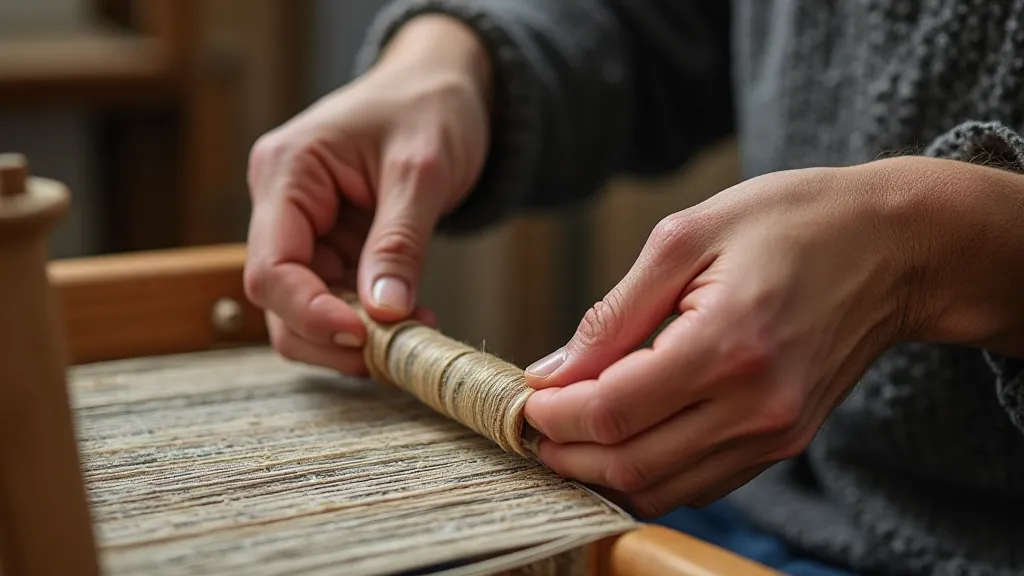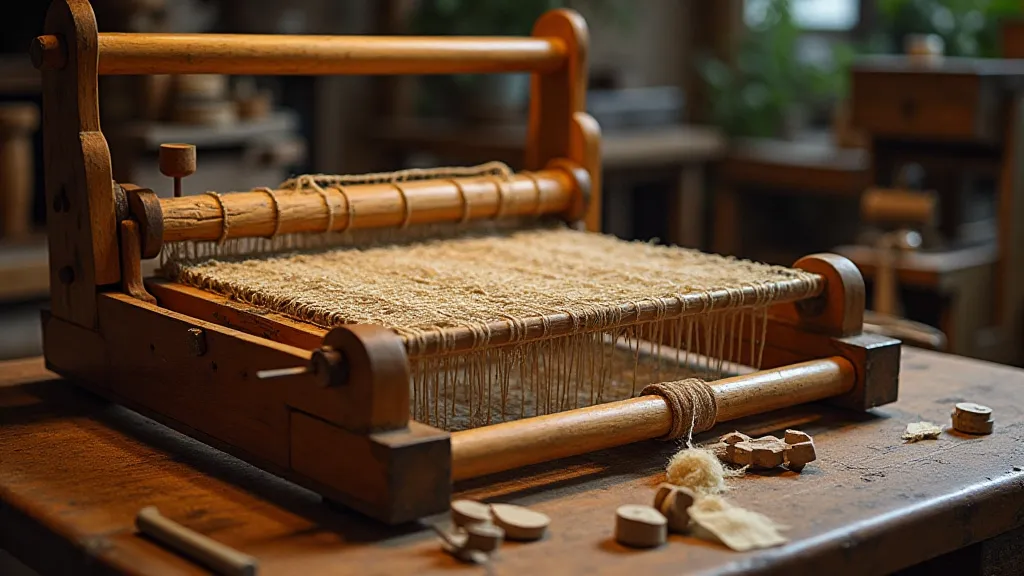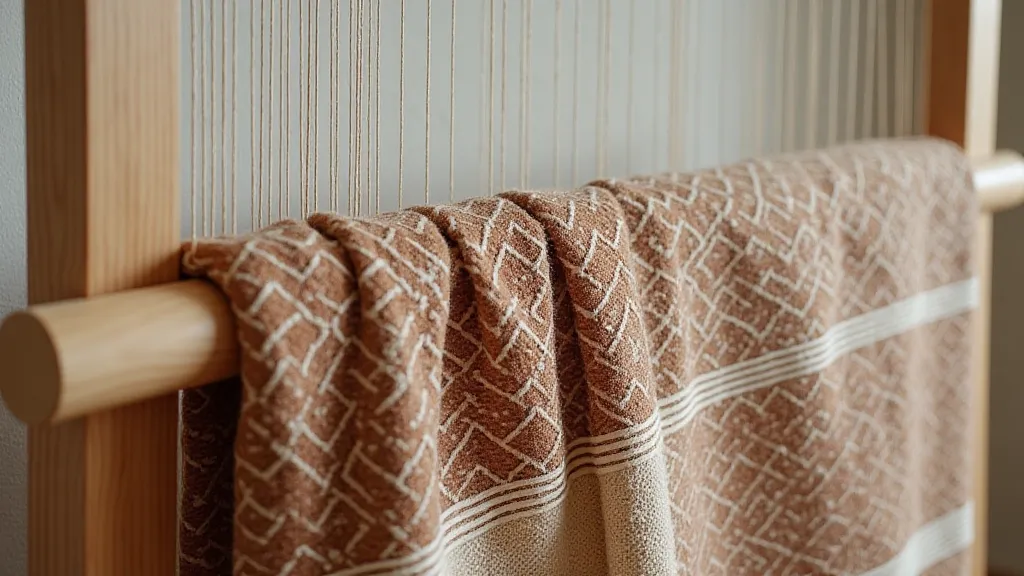The Rhythm of the Shuttle: Movement and Repetition in Weaving Meditation
There’s a particular quietude that settles when you sit at a loom. It’s not the silence of emptiness, but a deeply felt resonance, a hum born from the rhythmic click of the shuttle and the gentle rise and fall of the beater. For centuries, weaving has been more than just a craft; it's been a practice interwoven with ritual, meditation, and a profound connection to the natural world. It’s a tangible expression of patience, perseverance, and the beauty inherent in repetition.
My earliest memories of weaving are tied to my grandmother’s attic. Dust motes danced in the shafts of sunlight that pierced the gloom, illuminating stacks of antique textiles - faded quilts, intricately patterned rugs, and lengths of handwoven cloth. The air smelled of cedar and age, a comforting scent that spoke of generations past. She didn’t teach me to weave in the formal sense; she simply *was* weaving. I’d sit at her feet, mesmerized by the dance of her hands, the way she coaxed color and texture from simple threads. It felt almost sacred.
The connection between weaving and meditation isn't accidental. The very process demands presence. You can’t rush the interlacing of warp and weft; each thread requires focused attention. The repetitive motions – the throwing of the shuttle, the beating of the weft – become a mantra, a grounding force that quiets the mental chatter. It's a deliberate slowing down, a conscious choice to be fully immersed in the task at hand. In a world constantly demanding our attention, weaving offers a refuge, a space to simply *be*.

Regional Variations: A Tapestry of Traditions
The meditative qualities of weaving, however, aren't universal. They are deeply tied to the regional traditions and cultural significance embedded within the craft. Across the globe, weaving patterns and techniques have evolved, shaped by available materials, climate, and the beliefs of the communities that practice them. Consider the vibrant, geometric designs of Andean textiles, often imbued with symbolic meaning related to fertility, ancestor worship, or the landscape. Each color, each motif, tells a story, passed down through generations. The weavers, often women, are the custodians of this cultural heritage, preserving not just techniques but also the narratives they represent.
In contrast, the fine silks of China, with their intricate floral patterns and delicate embroidery, speak of imperial grandeur and refined aesthetics. The painstaking detail involved in their creation demands an almost superhuman level of concentration, making the process inherently meditative. Similarly, the intricate kilims of Turkey, with their bold colors and geometric designs, serve as both functional rugs and vibrant works of art, each telling a silent story of the weaver’s life and community. The patterns are not merely decorative; they are a visual language, conveying messages and preserving history.
Even seemingly “simple” weaving traditions hold profound meditative depth. The plain weave, the most basic of weaves, requires a focused attention to maintaining consistent tension and alignment. It's a lesson in humility, a reminder that beauty can be found in the simplicity of repetition. The key lies not in the complexity of the pattern, but in the intention and presence brought to the act of creation.
The Craftsmanship: A Legacy in Threads
The beauty of regional weaving isn't solely about the finished product; it’s about the craftsmanship that goes into its creation. Antique looms, often passed down through families, are themselves works of art – testaments to the ingenuity and skill of their makers. The quality of the materials also plays a crucial role. Natural fibers like wool, cotton, silk, and linen possess a warmth and texture that synthetic materials often lack. The subtle variations in color and thickness within a single skein of yarn can add depth and character to the finished cloth, making each piece unique.
Restoring antique textiles is a delicate process, requiring a deep understanding of the original materials and techniques. Simply cleaning a piece can be risky, as harsh chemicals can damage the fibers and fade the colors. Conservation often involves stabilizing weakened areas, repairing tears, and carefully re-weaving damaged sections – a testament to the enduring value placed on these cultural artifacts. Learning to recognize the signs of age – the subtle discoloration, the slight variations in weave – is part of appreciating the history embedded within a textile.

Finding Your Own Rhythm
You don’t need to be a master weaver to experience the meditative benefits of the craft. Even a simple project – a small scarf or a few yards of cloth – can offer a pathway to mindfulness and creative flow. The key is to approach the process with intention, to focus on the rhythm of the shuttle, the feel of the yarn in your hands, the quiet satisfaction of seeing a pattern emerge. It’s about finding your own rhythm, your own connection to the ancient tradition of weaving.
Consider starting with a simple plain weave on a small frame loom. Don’t worry about creating a perfect piece; focus instead on the process itself. Let the repetitive motions quiet your mind, and allow the yarn to guide your hands. The finished product will be a tangible reminder of your journey, a testament to the power of patience, perseverance, and the beauty of repetition. And who knows? You might just discover a new form of meditation, a new connection to the ancient rhythm of the shuttle.
The world often encourages us to rush, to produce, to constantly strive for more. Weaving offers a powerful antidote to this relentless pressure, a chance to slow down, to reconnect with our senses, and to find solace in the simple act of creation. It's a timeless tradition, a global language, and a pathway to inner peace. The rhythm of the shuttle is a rhythm for the soul.






